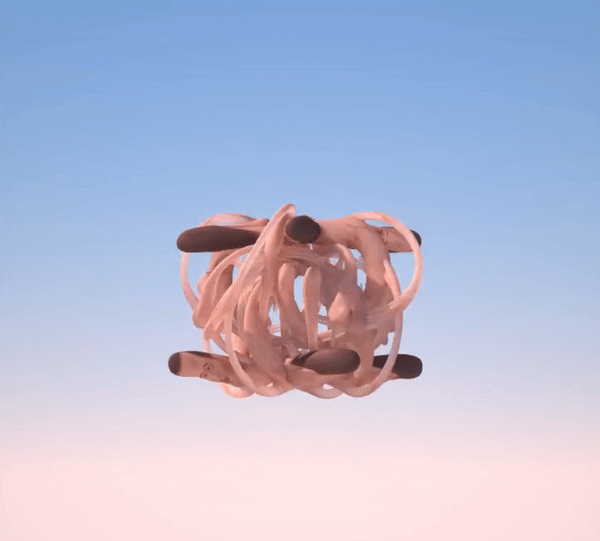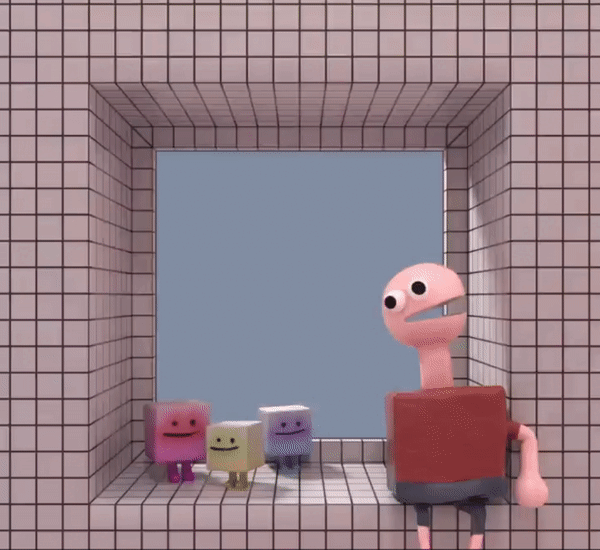MODA
ARTIST SPOTLIGHT
CHRISTOPHER RUTLEDGE
by Mila Phelps FriedlThese days, it is relatively normal to see wild characters, born of digital creatives, making their rounds on the internet, in the realm of NFT collections and featured in art shows. For Los Angeles based digital artist Christopher Rutledge, also known online as Tokymegz, these characters are the fabric of his art, stemming from his love of flash animation cemented all the way back in his 5th grade computer class.
Around 2015, Rutledge made the jump to 3D animation styles noting that this was “a pivotal moment, because [3D art styles] really kind of clicked together the creative and technical sides of my brain…. 3D just opened up this whole new toolset…like I could start automating things and I could build things in a more procedural way.” Pursuing a degree first at Rhode Island School of Design with an eventual transfer to Pratt Institute, Rutledge emerged with an BFA in Digital Arts and 3D Animation. “I would say overall, like, the style that I've found that appeals to me the most, and that I'm most interested in exploring is stylized characters, and worlds… with realistic rendering, and animation and simulation and things like that so that [it] is kind of cartoony looking in terms of the design, but realistic in terms of the material and it feels tactile, and it feels like it could be a real thing.”
Using the procedural software Houdini, Rutledge has found a tool that combines his passion for character work into a highly technical, malleable simulation - creating a wide portfolio of wildly gesticulating characters with emotion-filled faces and a cartoonish immunity to the binding laws of gravity. Before consolidating his process to Houdini specifically, Rutledge recounts a roundabout workflow that involved VR sculpting in Adobe Medium before bringing the art piece into ZBrush for fine tuning clean-up, a swap over to Substance Painter for texturization, Marvelous Designer for the addition of clothes and finally to Maya for the last bits of animation before going back to Houdini to add the stimulating effects to the face, hair and body of the character. Now Rutledge finds it best to utilize each of these tools as needed but to build primarily around the functions of Houdini.
Currently, Rutledge has a few collaborations with Takeshi Murata, an American contemporary artist who also works in the digital space. One such collaboration, Larry the Dog, featured on Rutledge’s social platforms, has been a great exercise in how animation can interact with an already made character - Larry the dog ballooning, stretching and collapsing like some gelatinous children’s toy while in a stylish basketball jersey. Rutledge has enjoyed the joint project with Murata handling the sculpt and the clothing of Larry, and Rutledge free to play with character animation, which can include everything from a floppy soft body sim to the addition of strange liquids interacting with the original Larry the dog simulation. Says Rutledge, “I’m just trying to figure out how to use Houdini in a way that it doesn't usually get used because I think most people think of Houdini and they think of people making Godzilla destroying a building for like a movie that ILM is doing the the effects on or like you know giant explosions for Michael Bay… but this tool is just so insanely powerful and it can do so much other stuff that why would I want to do kind of what everyone else is doing with it.” In another collaboration with Murata, along with J. Krispy, Rutledge helped in the creation of Kai Gen, a procedural character generator. It was a project that tested their creativity around the limits of on-chain file sizing - the final code for these varied Kai Gen creatures clocking at at somewhere under 45 kilobytes. “We're just having fun watching that project grow and kind of coming up with ideas for other stuff we could potentially do with it… [we] want to kind of explore that more and [we] are creatively excited about the different possibilities.”
* * *
“I just love doing characters and faces and stuff. Because it's so easy to spark emotion coming off of the face. And like making really tiny little tweaks to that face can create such a different sort of emotion. Our brains are just so tuned in to seeing faces and stuff, that it makes it really fun to work that way in 3D with procedural character building. To me, it's like a whole other level of emotion that you feel when you look at a piece of art that has like a character's face in it…it's like, looking back at you and you can kind of get a sense of what they're feeling or projecting your own emotions onto them or whatever. I love my characters and I am just trying to think of clever, unique, new ways to make characters that I haven't thought of or seen before. And it's really cool and inspiring to see what everyone else is doing with characters, both in 3D and beyond.”


